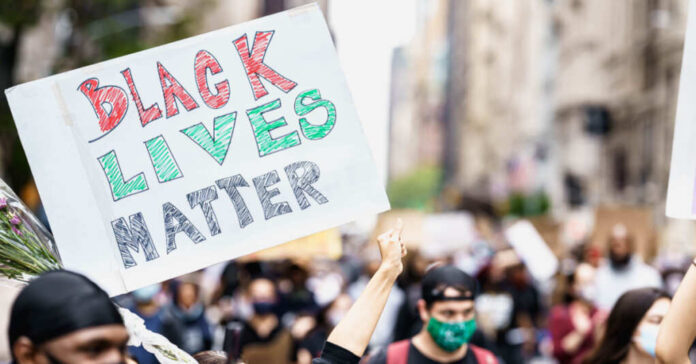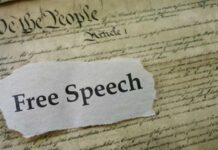
Melissa DeRosa, the aide to former New York Governor Andrew Cuomo, has claimed then-New York City Mayor Bill de Blasio is spilling the beans in a shocking new expose. Her book, What’s Left Unsaid: My Life at the Center of Power, Politics & Crisis, revealed that then-Mayor Bill de Blasio made a conscious decision to let the Big Apple implode during the 2020 BLM riots following the death of George Floyd.
In the memoir, DeRosa recounted a conference call during which Cuomo, de Blasio, and then-Police Commissioner Dermot Shea discussed a situation where the officer mentioned that there were “just 4,000 officers on duty,” a number significantly lower than the 5,000 protesters present.
DeRosa recalls that a senior representative from the police union had contacted the governor that morning, sharing concerning details. The representative expressed concerns that de Blasio, worried about the potential for police confrontations with protesters going viral on video, was intentionally refraining from deploying additional personnel. The officers, aware that they were wildly outnumbered, were reluctant to engage with the looters.
Even as the situation escalated, de Blasio refused help from the National Guard and New York State Police.
As shocked as Cuomo was to hear the news, his hands were effectively tied. Mayors are often considered the chief executives of their cities and are responsible for law enforcement matters within their jurisdiction.
Governors generally don’t have the direct authority to force a mayor to increase police presence at a specific event, but there are situations where a governor can become involved in local law enforcement matters. This can happen if there is a state of emergency declared, and the governor activates the National Guard or state police to assist local law enforcement. Such decisions are often made based on concerns about public safety and the preservation of law and order, but as unsettling as the riots were, they were largely self-contained in de Blasio’s city.
While there was little he could do, Cuomo expressed shock at what he considered “a staggering admission of malpractice” by the admission that de Blasio had deliberately minimized police deployment during the riots. De Blasio appeared to cave a little, however, and upped the police presence to 8,000 officers. The mayor and the governor also agreed to impose a curfew to contain the violence spreading throughout the city.
Cuomo believed that the NYPD did not have any near the amount of police officers necessary to quell the BLM riots. The governor maintained open lines of communication, engaging in direct conversations with ordinary members of the NYPD and their union representatives to monitor the escalating violence.
By the time de Blasio realized his decision was negatively impacting his image far more than an increased police presence ever would have, it was too late. The nation watched in horror as scenes, like an angry driver running over demonstrators and police cruisers set on fire, flooded news organizations and social media.
DeRosa’s book acknowledges that de Blasio was swayed by the far left progressives who advocated for “defunding the police” and reallocating police funding following Floyd’s death.
The decision was unwise and misguided, but that didn’t deter radical left-leaning elected officials from embracing the concept, DeRosa points out in the book.
But de Blasio wasn’t done yet.
The mayor went a step further, positioning himself at the forefront of this movement by declaring a planned reduction of $1 billion from the NYPD’s operational budget and an additional $500 million from its capital budget.
It was too little, too late. DeRosa vividly recounted the scenes in Midtown Manhattan, where looters brazenly vandalized the prominent Macy’s storefront in Herald Square and Rockefeller Center, with no police in sight to intervene. Meanwhile, NYC’s “Occupy City Hall’ protest left buildings marred by graffiti and streets strewn with trash. Protesters encamped outside City Hall for over a week as demands for comprehensive police reform grew.
It’s a scene that played out a few years earlier in Baltimore, Maryland following the death of Freddie Grey. In 2015, as BLM violence spread throughout the city, then-Mayor Stephanie Rawlings-Blake remarked that rioters needed to be given “the space to destroy,” and refused offers of help from then-Governor Larry Hogan.
More recently, former Capitol Police Chief Steven Sund revealed that then-House Speaker Nancy Pelosi chose not to call for help ahead of the January 6th incident because of “optics.”
It’s a lesson that liberals never learn. Disguising or misrepresenting the true nature of a situation ultimately leads to chaos and a surge in violence. Democratic leaders must shift their focus away from appearances and prioritize public safety.
Regardless of the media’s attempts to obscure the facts, the truth inevitably emerges. When it does, it only underscores the incompetence of liberal leadership.











